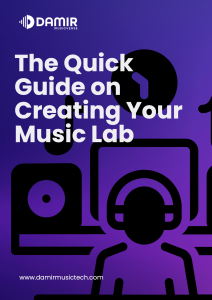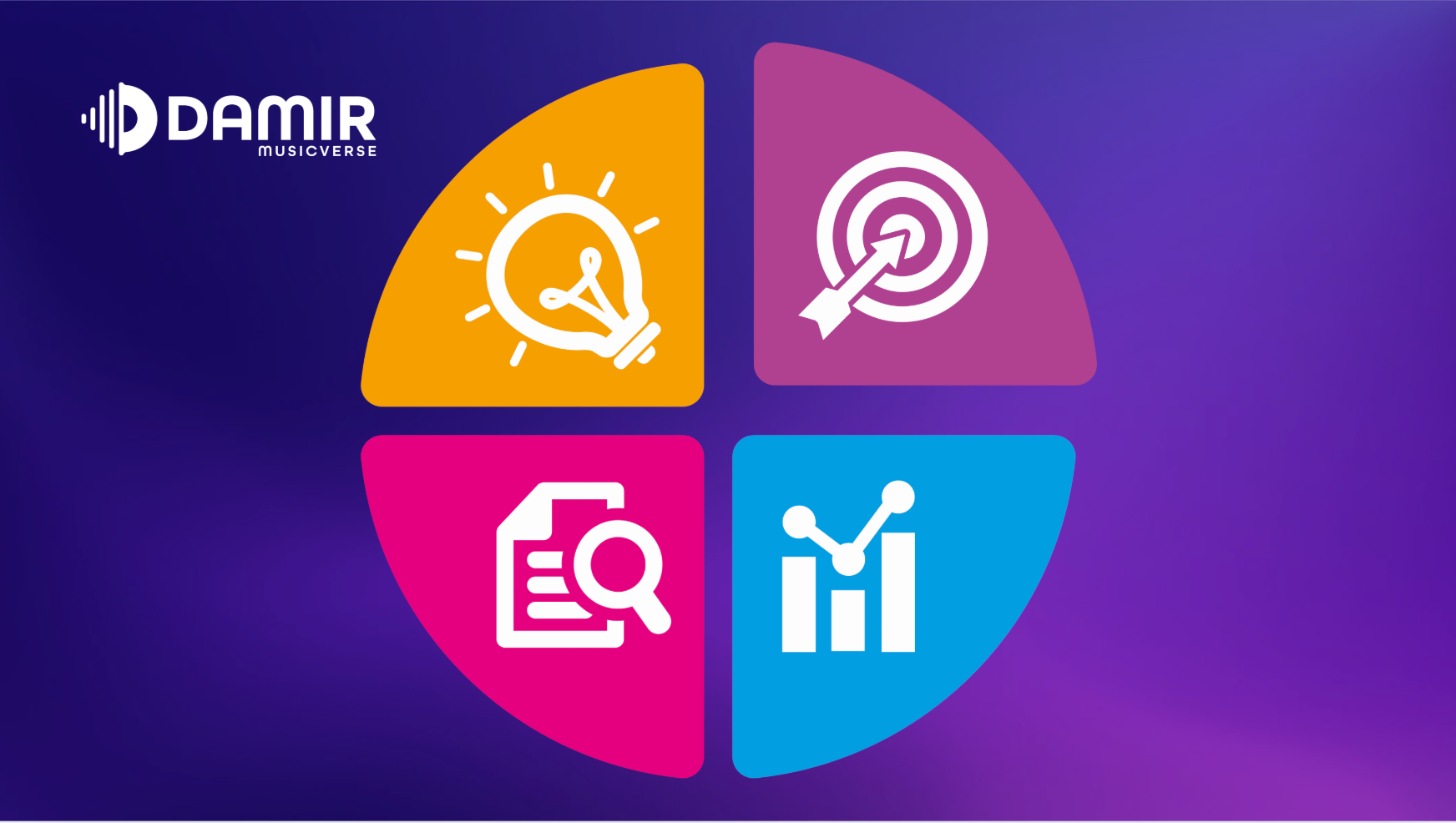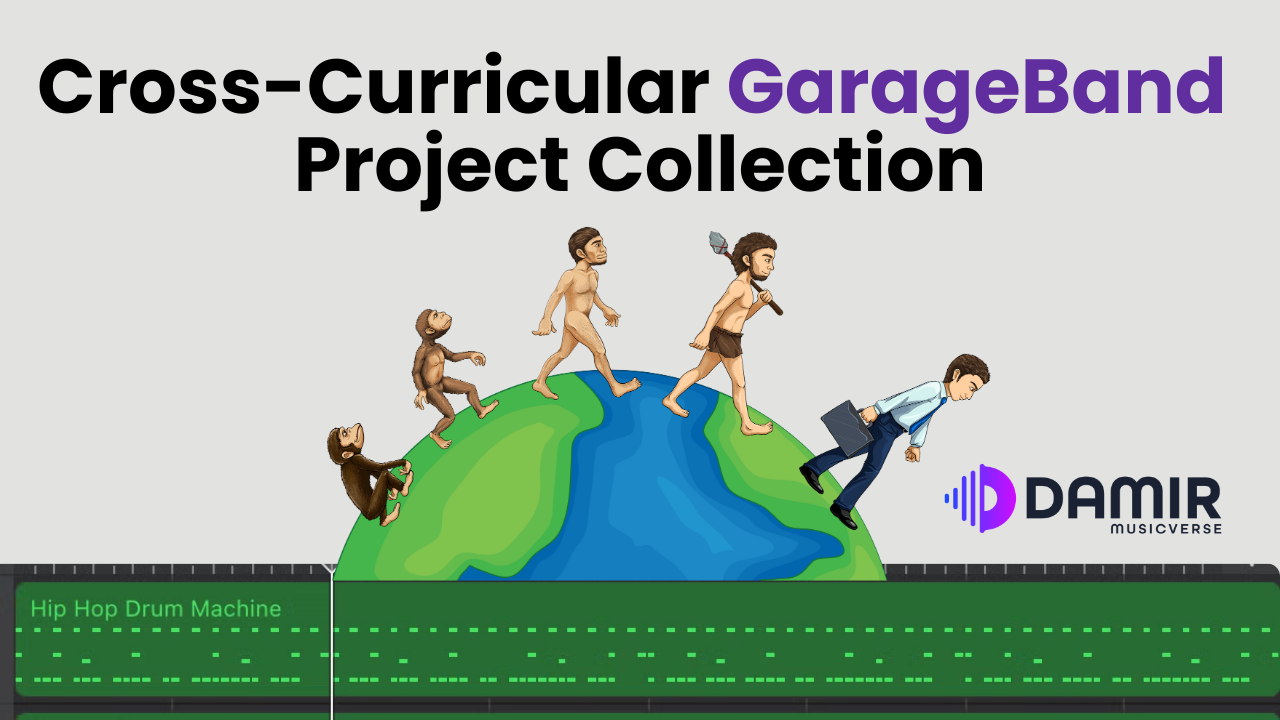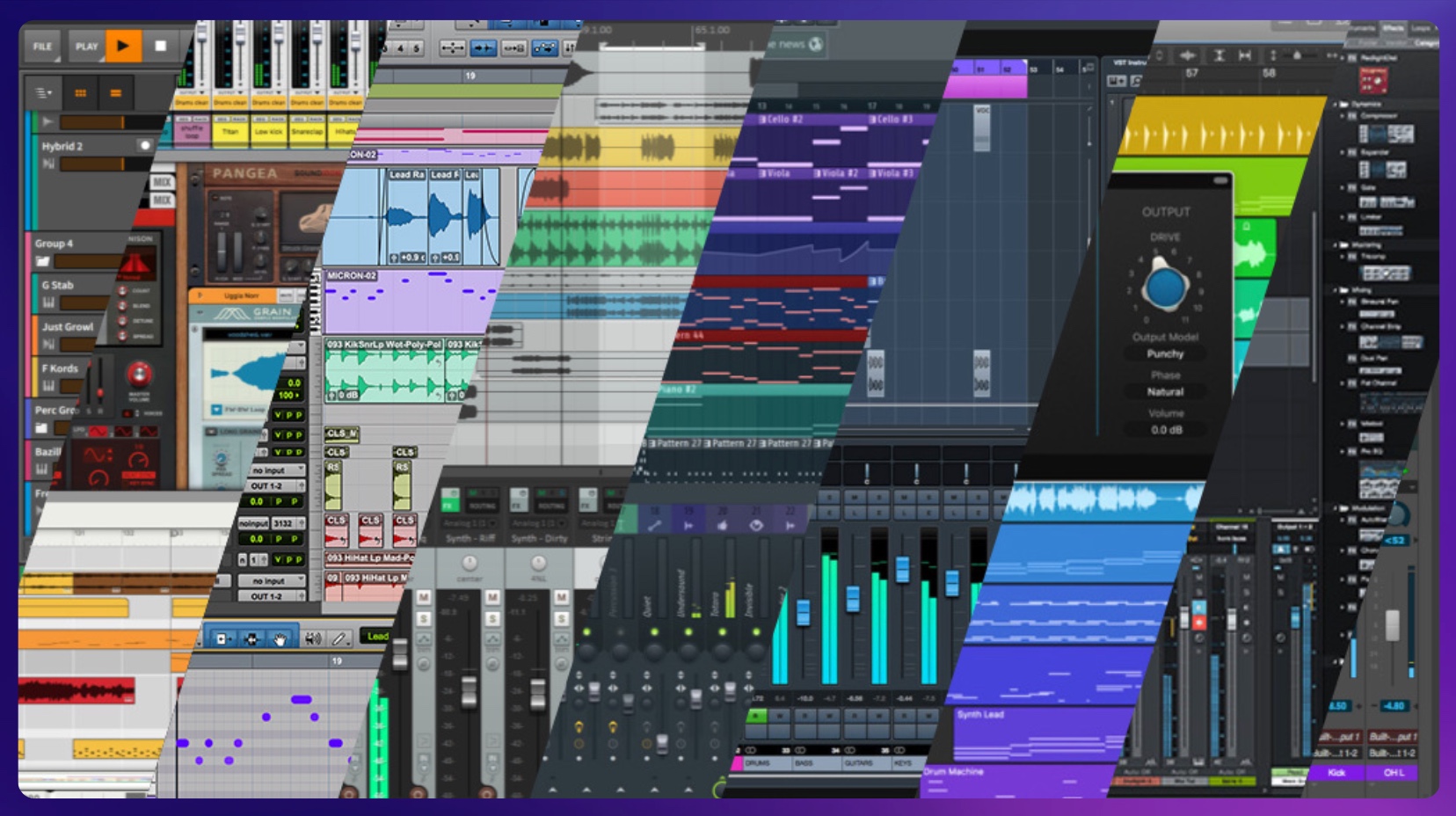Introduction
Hi and welcome to the article where I will unpack the thinking process when creating a musiclab from scratch. There are many nuances to this endeavor, and here we will focus on some of the fundamental leading points.
After reading this article, you will be able to approach this project with confidence and adjust it in order to suit your needs and the needs of your students.
In the future, I will be sharing more details around this topic. To stay updated, click on the button below, and as a welcome gift, receive a resource pack containing all the musictech goodies I’ve shared in our Musicverse community so far.

Subscribe now to instantly access this resource and unlock exclusive tools to enhance your music teaching!
1. Budget: Maximize and prioritize Music Lab expenses
When planning a music lab, it is crucial to consider the budget available. Research the prices of different options and prioritize your purchases based on your budget. Additionally, consider any ongoing costs, such as software updates, subscriptions, or maintenance fees.
To maximize your budget, explore potential partnerships with local music stores, audio equipment manufacturers, or educational institutions. They may offer discounted prices or sponsorship opportunities. Furthermore, consider seeking grants or funding from organizations that support music education initiatives.
Keep in mind that establishing a music lab doesn’t necessarily require a large budget. It is possible to start small and gradually expand as you secure more resources. Prioritize essential equipment initially and gradually invest in additional tools and instruments as your budget allows.
2. Application: Consider the big picture of your Music Lab
When planning a music lab, it is crucial to think about the application and goals of the lab. Consider the number of students who will be using the lab and the kind of music they will be making.
This will help determine the size and capacity of the lab, as well as the hardware and software needed to support their musical endeavors.
Additionally, consider the level of the students and the curriculum goals of the music program. By thinking about the applications and curriculum goals, you can ensure that the music lab is tailored to the specific needs of your students.
3. Space: Plan with a purpose on mind
After deciding on the budget and application for your music lab, it is important to consider the physical space you have available. Take into account the size of the room and ensure it is spacious enough to accommodate the necessary equipment, such as desks, chairs, and instrument racks.
Additionally, consider the layout of the room and ensure that it allows for easy movement and interaction among students.
Creating a comfortable and well-organized physical space is crucial for a productive and enjoyable music lab environment. It allows students to focus on their music-making without any distractions and ensures that all necessary resources are easily accessible.
4. Hardware: Price Vs Durability
When choosing the right hardware for your music lab, it is essential to consider the actual use cases. Start by assessing the type of music they will be creating and the instruments they will be using.
This will guide you in selecting the appropriate equipment, such as MIDI keyboards, synthesizers, audio interfaces, and microphones.
Additionally, consider the number of students who will be using the lab simultaneously. Ensure that you have enough hardware to accommodate their needs and allow for group collaborations. It is also important to choose hardware that is compatible with the software you plan to use, ensuring seamless integration and efficient workflow.
Another factor to consider is the durability and quality of the hardware. Since the lab will be used by multiple students over time, it is crucial to invest in equipment that can withstand frequent use and provide reliable performance. Research different brands and read reviews to ensure you choose hardware that is known for its durability and longevity.
When faced with a Windows/Apple dilemma, I always choose Apple devices due to their favorable price vs. durability ratio. Additionally, I have developed a compelling strategy on how to convince your SLT that the Apple ecosystem is the best option. I will share this strategy in my future writing.
5. Software: Application and accessibility of your Music Lab
Look for software that supports music genres and styles your students will compose, as well as the instruments and equipment they’ll use. Choose software with a wide range of virtual instruments, effects, and recording capabilities.
Also, prioritize user-friendly software. Students should be able to navigate it easily and focus on their creativity. Seek software with intuitive interfaces and ample learning resources.
Consider licensing options and costs. Some software requires individual licenses, while others offer educational licensing options for multiple installations. Choose based on your budget and the number of students.
GarageBand is one of my favorite digital audio workstations (DAWs) to use in the classroom. In the articles below, you can learn more about it based on my own experience and various use cases.
📎 35 GarageBand Projects for the Classroom
📎 Music Tech Powered Curriculum, Grade 7
6. Integration: When the Music Lab magic happens ✨
The final step in creating a music lab is integrating it into the music curriculum. To maximize the benefits of the musiclab, it is essential to align its use with the goals and objectives of the curriculum. This involves incorporating the lab into lesson plans, assignments, and projects to provide students with meaningful opportunities to apply their knowledge and skills.
In my school, I extensively use the Mac Lab as part of my grade 8 middle school curriculum. I have explained the syllabus details in the article below. Check it out, as it offers a unique way of incorporating technology into the music curriculum at this level.
📎 Tech-Powered Music Middle School Curriculum, Grade 8
Conclusion
Integrating a music lab into the curriculum allows students to explore and experiment with concepts learned in class. They can compose, arrange, and record music using the lab’s software and hardware and collaborate with peers.
The music lab also encourages interdisciplinary connections. Students can explore how music relates to subjects like visual arts, literature, and technology. They can create soundtracks, analyze music’s cultural significance, and experiment with production techniques.
Continuously assess and seek feedback from students and teachers to improve the music lab. Stay updated with advancements in musictechnology and educational practices to ensure its relevance.
With careful planning, dedicated teachers, and enthusiastic students, your music lab can become a hub for artistic expression, collaboration, and growth.
Thank you for reading this article. I hope you found it helpful.

Subscribe now to instantly access this resource and unlock exclusive tools to enhance your music teaching!
Are you using Music Lab in your music teaching?
Do you have experience constructing a music lab?
Did I miss any crucial points of this process?
Let me know in the comments below, as I am looking forward to extending the discussion around this topic.


